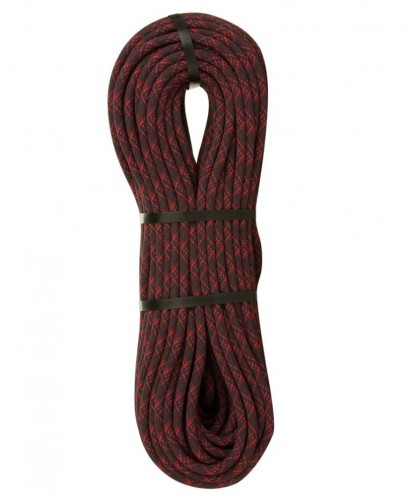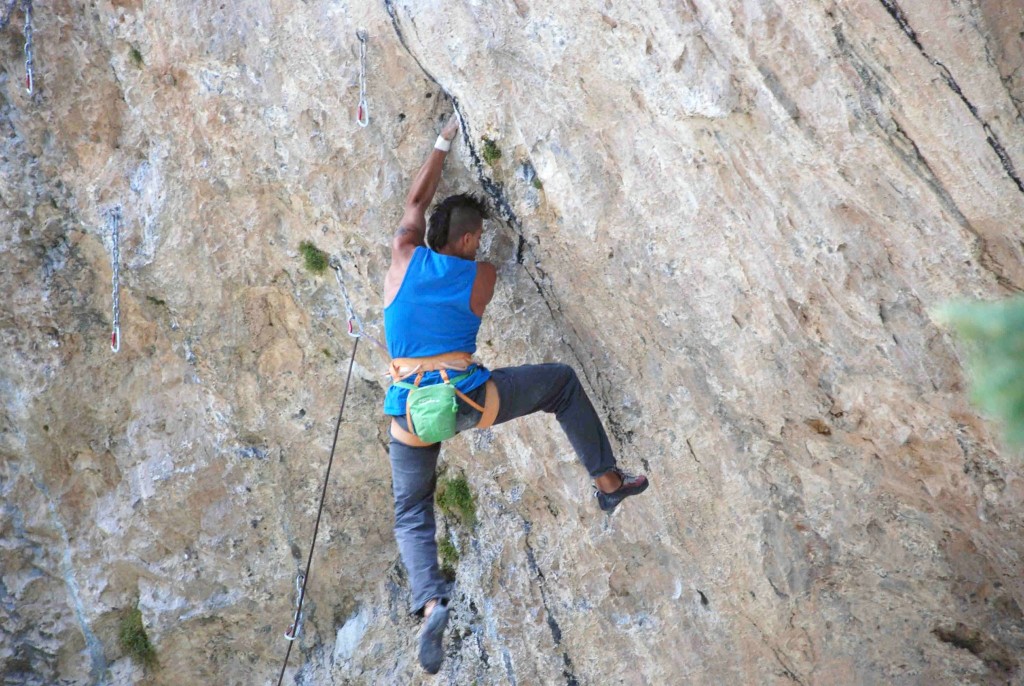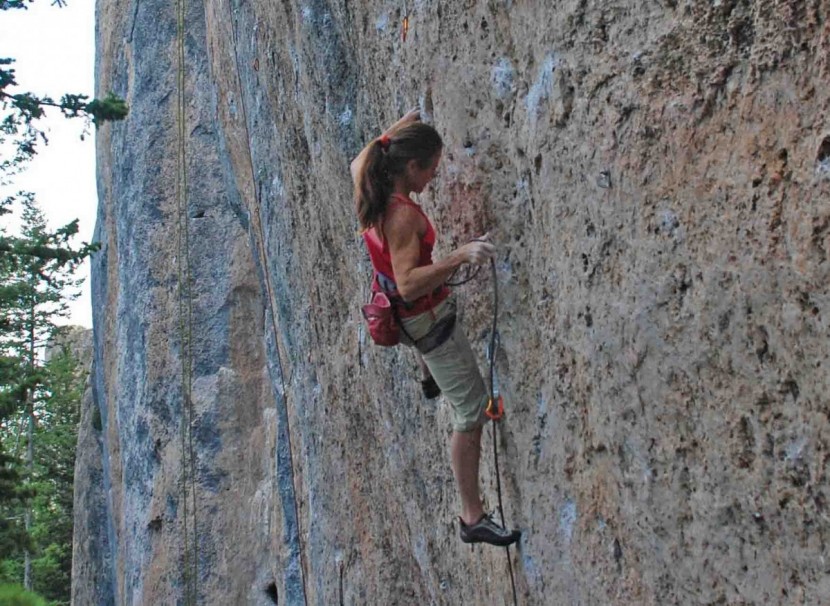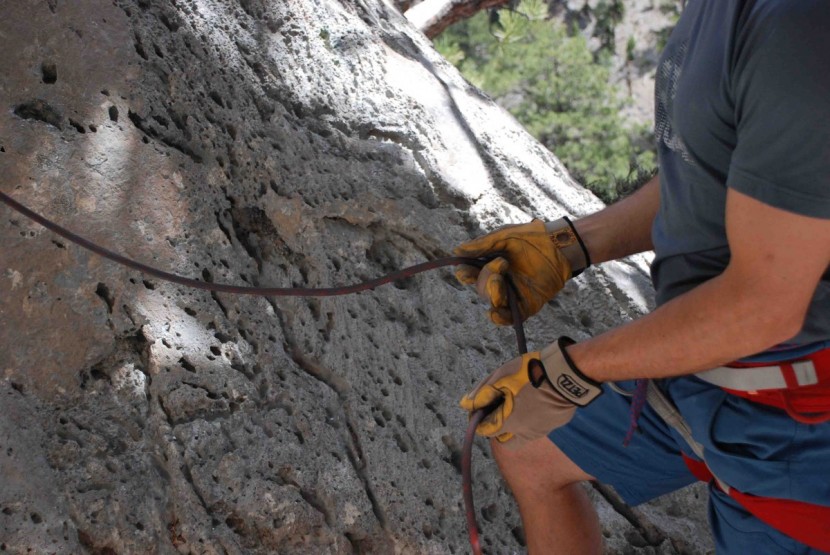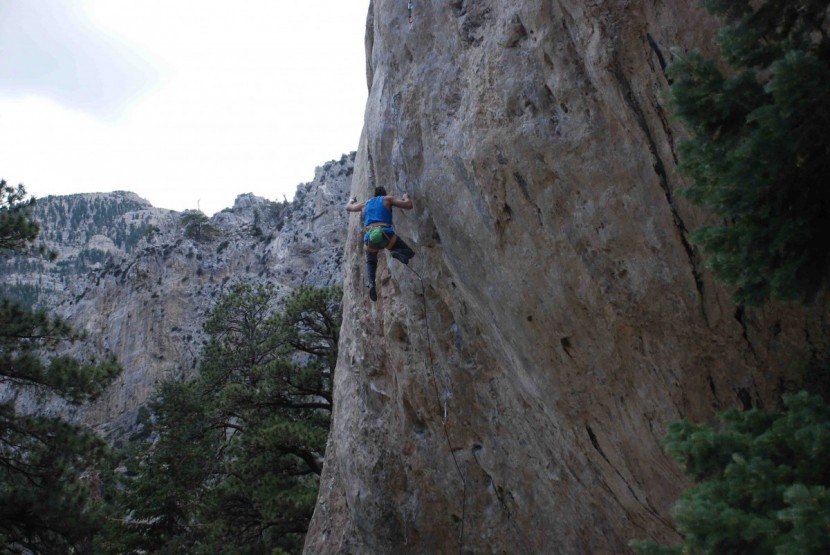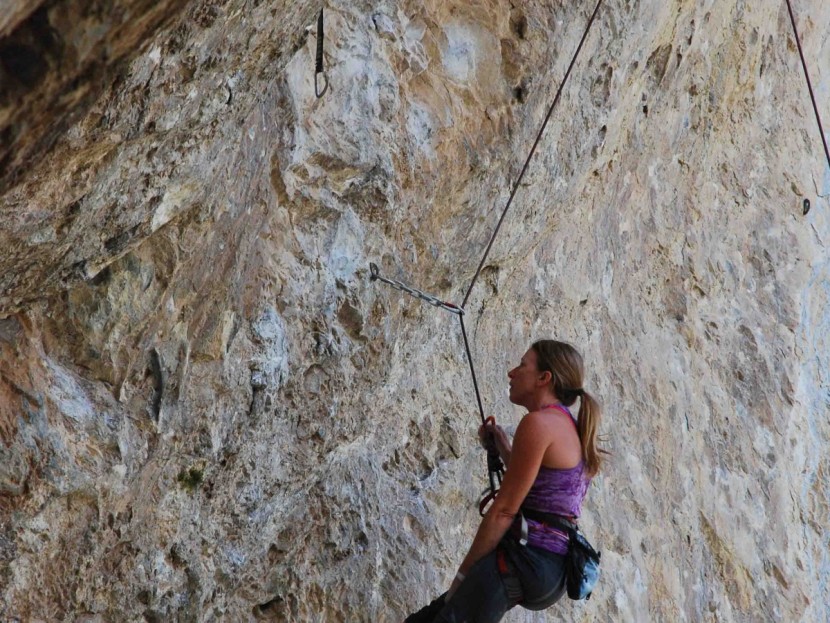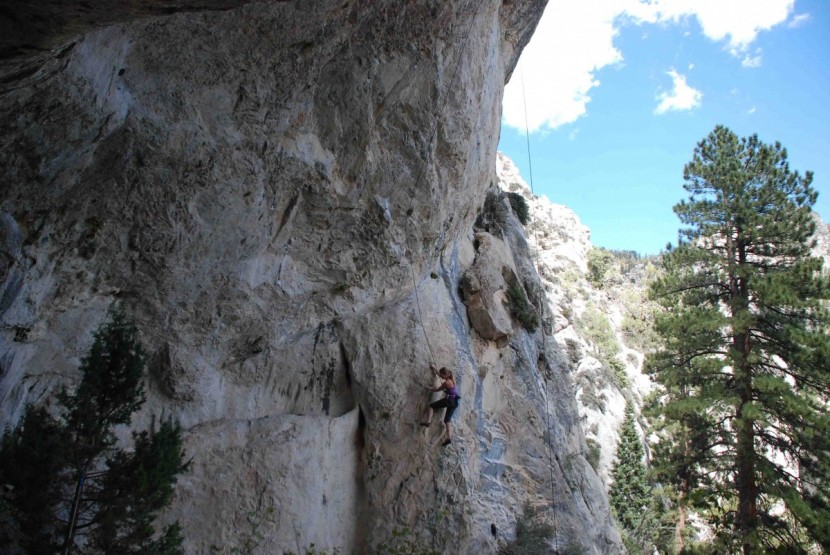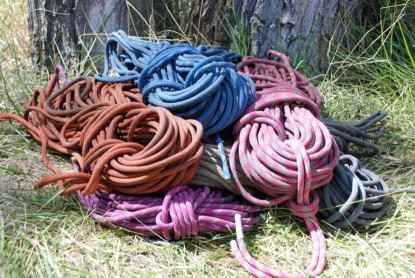Maxim Pinnacle Review
Our Verdict
Our Analysis and Test Results
The Maxim Pinnacle is available in 60m and 70m lengths. All of the versions of this rope come with an “Endura Dry” treated core, which is then protected by either a standard sheath or a 2xDry sheath. Maxim joined with New England ropes years ago, but you'll still see the New England label online sometimes, and this rope feels similar to some of New England's polyester sheath ropes from the mid-2000s, though their current sheaths are made of nylon.
Handling
We love the way the Maxim Pinnacle handles. All of our testers agree that this line felt great in their hands, especially for clipping.
This rope is soft and supple, while still maintaining enough structure for fast and smooth clips. It feels completely different from any other rope in the test group, even in the way that it coils. When we butterfly coil it around our neck and compare it to some of the other competition, it takes up only half of the space because the rope is so supple. Our testers all like the handling on this rope, particularly when making fast clips in tenuous positions, but it may take some getting used to if you're used to the 2-over-2 weave of most other rope brands.
Belaying is also smooth and easy, and we didn't experience excessive kinking with this line. Kinks can be introduced via lowering off staggered anchors, or from improper unspooling. This rope does come in a factory drum coil, but we took the time to unwind it carefully and didn't experience significant kinking afterward.
Catch
Did we take a single hard fall on this rope? Nope! This rope provided soft and bouncy catches every time. But, as we'll explain below, the ratings on this rope do cause us some concern for various reasons and resulted in a slightly lower score.
This line has a 10.3 kN impact force rating and a 26% maximum dynamic elongation. These ratings come from a very specific UIAA test where an 80 Kg mass takes a 1.77 factor fall onto a rigid belay. The maximum force allowed by the UIAA standards is 12 kN, as this has been determined to be the greatest amount of deceleration force that the human body can withstand. In real life falls, with the displacement in both climbers' harnesses, slippage through the belay device, and the upward movement of the belayer, the maximum force doesn't approach this level. (It's also rare to take a 1.77-factor fall and actually impossible on single pitch routes - you'd hit the ground first.)
While we still took soft falls on this line with an attentive belayer and a dynamic belay movement, the ability for this rope to exert a higher force is a bit concerning, particularly if you climb on traditional gear and want to avoid blowing pieces. Most of the ropes that we tested have an impact force rating of 8.4-8.8 kN, while some even are listed with ratings as low as 7.3 kN. In other words, laboratory tests suggest a catch with the Pinnacle could possibly result in up to 30% more force than the lowest impact ropes. That is why we recommend the Pinnacle for sport climbing rather than all-around use. Also, because of the potential for more force to be applied, only people proficient with dynamic belaying should use this rope.
The upside to the lower elongation specs for this line is that it gives a tight top rope feel, so if you have someone who regularly seconds your harder lines but hates feeling like they “fall” a couple of feet every time they weight a top rope, they'll probably like this line better.
Weight
This rope has a higher weight per gram than the other 9.5 mm ropes in this review.
It weighs 61 g/m, whereas the other 9.5 mm ropes weigh in around 58 - 59 g/m. This difference in weight is equivalent to about 6 ounces for a 60 m rope and about half a pound for a 70m. Will you notice this difference? That depends. We do appreciate less weight for carrying up to the crag, and when you go light on all of your gear, the ounces can add up. When you're climbing, you often don't notice the weight of the rope until the end of a long pitch, and then it might be due to rope drag more than the weight itself. But you are carrying the weight of the rope on your harness, and if there's a showstopper move at the top of a long pitch, those extra ounces could make a difference. If you really want to lighten up and are a proficient belayer, check out one of the many super skinny single ropes now available, which weigh as little as 52 g/m.
Durability
We were impressed with the durability of this rope.
We were initially worried as to how this rope would hold up, as the New England ropes that we had in years past quickly turned into wire-like lines. So far so good with the Pinnacle, and even after 70 pitches, we have yet to feel the rope stiffening. The weave is a 1x1 pattern, which typically equates to better abrasion resistance compared to the more common 2x2 weave. We can see virtually no sheath fuzz on this line and only a little dirt accumulation. If the Pinnacle were a thicker rope, we'd be tempted to give it a perfect score, but since it is thinner, it likely won't last quite as long as some thicker models.
Value
The retail price for this rope is certainly up there. If you're looking for a good rope that's not quite as expensive check out our Best Buy winner. This rope has a number of interesting attributes that may make it worthwhile for someone who isn't on a super tight budget, but overall it doesn't top the charts when it comes to value.
Conclusion
The Maxim Pinnacle is a great niche rope for those who like to sport climb. It's not too heavy, and has great clipping and belaying action. This isn't the best all-around rope, and it certainly isn't suited for beginners, but if you've been sport climbing for a while and are looking for a high-performance line for your redpoint attempts, this is an excellent option.


